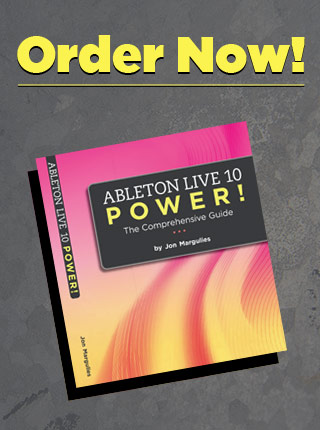Today, ask yourself a question: How improvisational is your live set? How much do you plan out in advance, and how much is decided on the spot? The answer often lies somewhere on a continuum – some things have to happen as planned, some have a great degree of latitude. Even within the areas of latitude there are subtle degrees. For example, you can probably wing it when varying the amount of filter or delay on a sound effect whilst in the middle of a groove, but if you’re using live techniques to build a climax that has to rise and resolve in a convincing way, you better have some sort of plan.
The problem is that performance environments almost always present variables that are impossible to plan for, such as:
- The effect parameter that you were tweaking at home is impossible to hear on the lousy monitors and boomy room at the gig.
- There’s not enough light to see your MIDI controller properly.
- The energy in the room is unexpectedly high or low, making your plan feel strangely inappropriate.
- There’s not enough room for you to set up, forcing you to put some piece of equipment in a weird, uncomfortable place.
The list, of course, goes on and on.
Back in the day when my main gigging instrument was guitar, I learned that there were two kinds of gigs: ones where you can hear yourself and really play, and ones where you can’t hear anything and the goal is to survive.
The great advantage of learning this lesson on guitar is that the guitar is always more or less the same. Six strings, all that. Eventually, you learn to use muscle memory, visual cues and your internal musical sense to survive even the most preposterous gigs. With computers gigs we forget that every time we buy or add a new controller, or even get a laptop with a different size screen, we are changing our instrument in a fundamental way.
So for today’s tip, try this idea on for size: no matter what you plan for your gig, 25-50% of it probably will not work as it did in your studio. You need to be able to rock the house with 50% of your stuff. The key here is to simplify your setup to the point where you can learn to play it blindfolded (and earplugged?).
I’m NOT saying you should avoid experimenting with new techniques and equipment. Just be realistic about the strange, non-linear learning curve that you’ll be navigating when you bring them out to the gig.





